Alabama photographer tells stories behind classic concert pix of Willie Nelson, Tina Turner, more
When the lights went down, the crowd would roar or leap to its feet, anticipating the arrival of Bruce Springsteen, Tina Turner, Willie Nelson, AC/DC, Johnny Cash or other music stars.
Although he always felt a rush of excitement, Art Meripol was ready for action. As a longtime concert photographer — and a lifelong music fan — Meripol knew he must work quickly to capture a fleeting moment on stage.
There was no time for him to cheer, marvel at the performers or wait for his favorite song to be played. Meripol was aiming for images that would epitomize the artist, evoke the concert experience or make the viewer feel as if the celebrity were looking directly at him.
Mission accomplished, as you’ll see in a collection of classic concert photos by Meripol, now on view at the gallery at Aldridge Gardens in Hoover. Nearly 40 images by the Alabama resident are on display, depicting rock, blues, jazz and country artists as they performed in the 1970s and ‘80s. About 50 more images by Meripol are available in a portfolio at the gallery.
Most, if not all, of the subjects in Meripol’s photos should be instantly recognizable to viewers. The list includes all of the artists mentioned above, along with Jerry Lee Lewis, Tom Petty, Fats Domino, Merle Haggard, John Prine, Bo Diddley, the Temptations, Gene Simmons of KISS and more.
“I like the immediacy of a picture,” says Meripol, 68, now a freelance photographer. “You don’t have to look at a star and guess who it is. Part of it has to do with the authenticity of the artist. The photos are straightforward — clean and simple, but immediate. I want to tell a story.”
Meripol, who moved to Birmingham in 1989, shot most of the photos at arenas and nightclubs in Arkansas, where he worked as a newspaper photographer. His primary tool: An old-school film camera, with the appropriate lens.
One of the images — a magnetic shot of singer/guitarist Stevie Ray Vaughan — was taken during a 1990 concert at Oak Mountain Amphitheatre in Pelham. Other photos can be traced to venues in Texas, Tennessee, Louisiana and Mississippi. Meripol also included a few from the first Farm Aid concert in 1985, an epic event that took place in Champaign, Ill.
To assemble the exhibit — his first ever, Meripol says — the photographer selected, scanned and printed images from an archive of film negatives that he keeps at home. Choosing specific images to display was challenging, Meripol says; he shot hundreds of shows for work purposes or personal pleasure.
“I’m a music fan of the first order,” Meripol says. “The only thing better than hearing music is seeing it live.”
His goal for the exhibit in Birmingham: To present photos of artists that seem iconic or timeless, and to connect with other music fans. According to Meripol, most of the photos on view have never been published, although a few have been used for special purposes such as a book cover (Stevie Ray Vaughan) or a celebrity tribute (Merle Haggard).
“I really hope people just find something they would like to see there, something that makes them feel good,” Meripol says. “I hope other people get to enjoy it.”
He shared several images from the exhibit with AL.com — you can see them in the gallery at the top of this post — and told us the stories behind some of his favorite photos. These are paired with the images below.
Birmingham’s Art Meripol took photos of Willie Nelson during a 1980s concert in Beaumont, Texas. (Art Meripol)
Willie Nelson (1980s, Texas)
“I believe this was shot in about 1982 in Port Arthur/Beaumont, Texas. I photographed Willie over half a dozen times, the last time at the first Farm Aid concert that he organized. But this was a few years earlier. At the time I didn’t recognize this photo as being worthwhile. Re-editing all my concert film about 2000, I found this frame. It struck me as much more iconic, more timeless than any other shot I had of Willie. Somehow the passage of time creates a different perspective of what’s good and what’s timeless.”
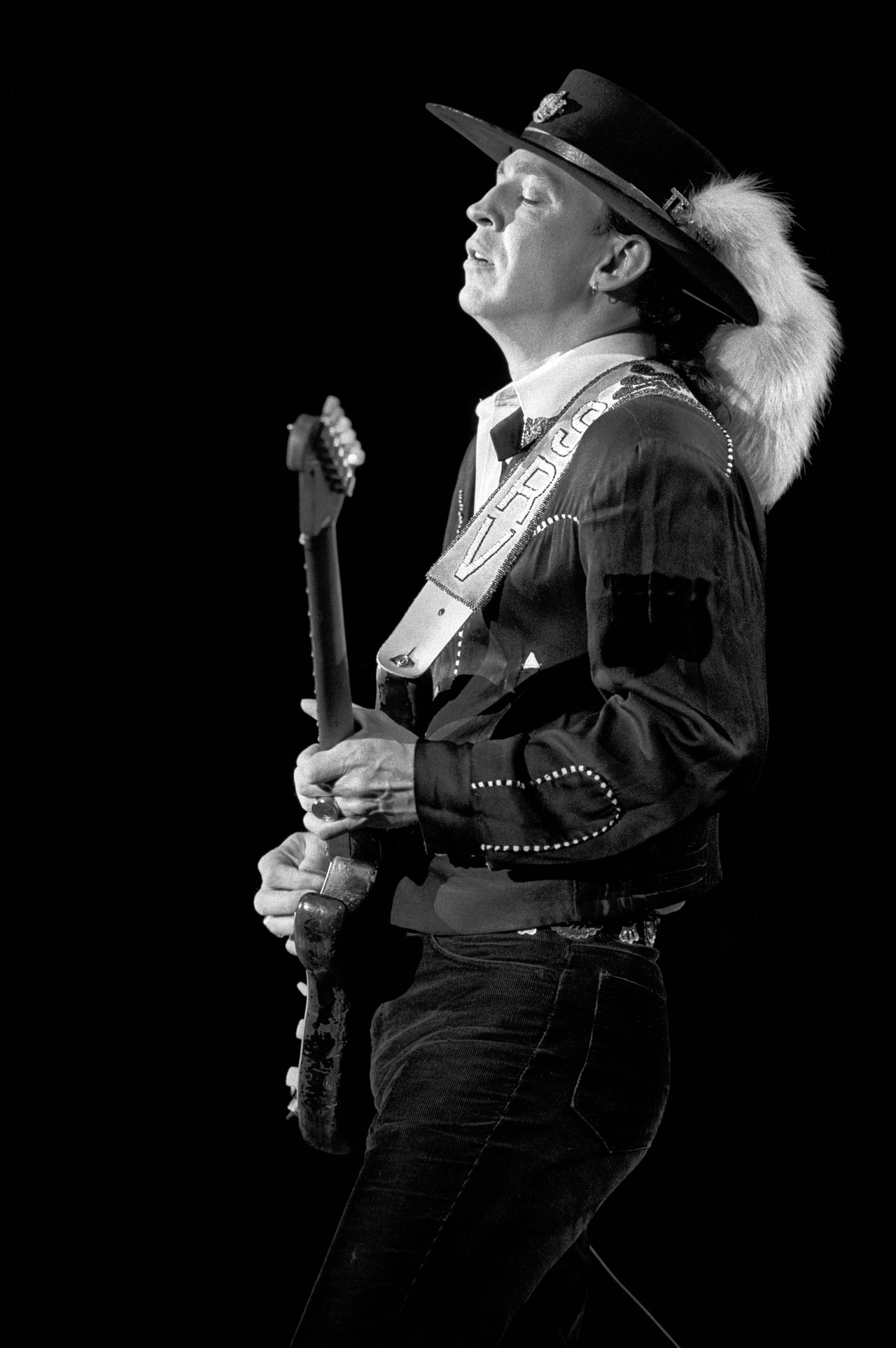
Birmingham’s Art Meripol took photos of Stevie Ray Vaughan during a 1990 concert at Oak Mountain Amphitheatre in Pelham, Alabama. (Art Meripol)
Stevie Ray Vaughan (1990, Pelham, Alabama)
“I had an opportunity to photograph Stevie Ray on a double bill with Joe Cocker in 1990, some months before he died. A photo from that show is the cover of his biography ‘Texas Flood: The Inside Story of Stevie Ray Vaughan.’ I also photographed him in 1983, in Little Rock, Arkansas. It was a run-down venue with poor sound. Stevie Ray had just completed guitar work for David Bowie’s ‘Let’s Dance’ album. When the album hit it rocketed Stevie Ray from a regional guitar act to national prominence. But this was just days before that release. He was opening for The Call. The crowd probably was less than 200 people. I was in front and had to use wide lenses. I was so close, I could have reached out and strummed his guitar. He played with his teeth and behind his back, leaving the crowd standing in awe. I felt sorry for the Michael Been, lead singer of The Call who had to follow that act.”
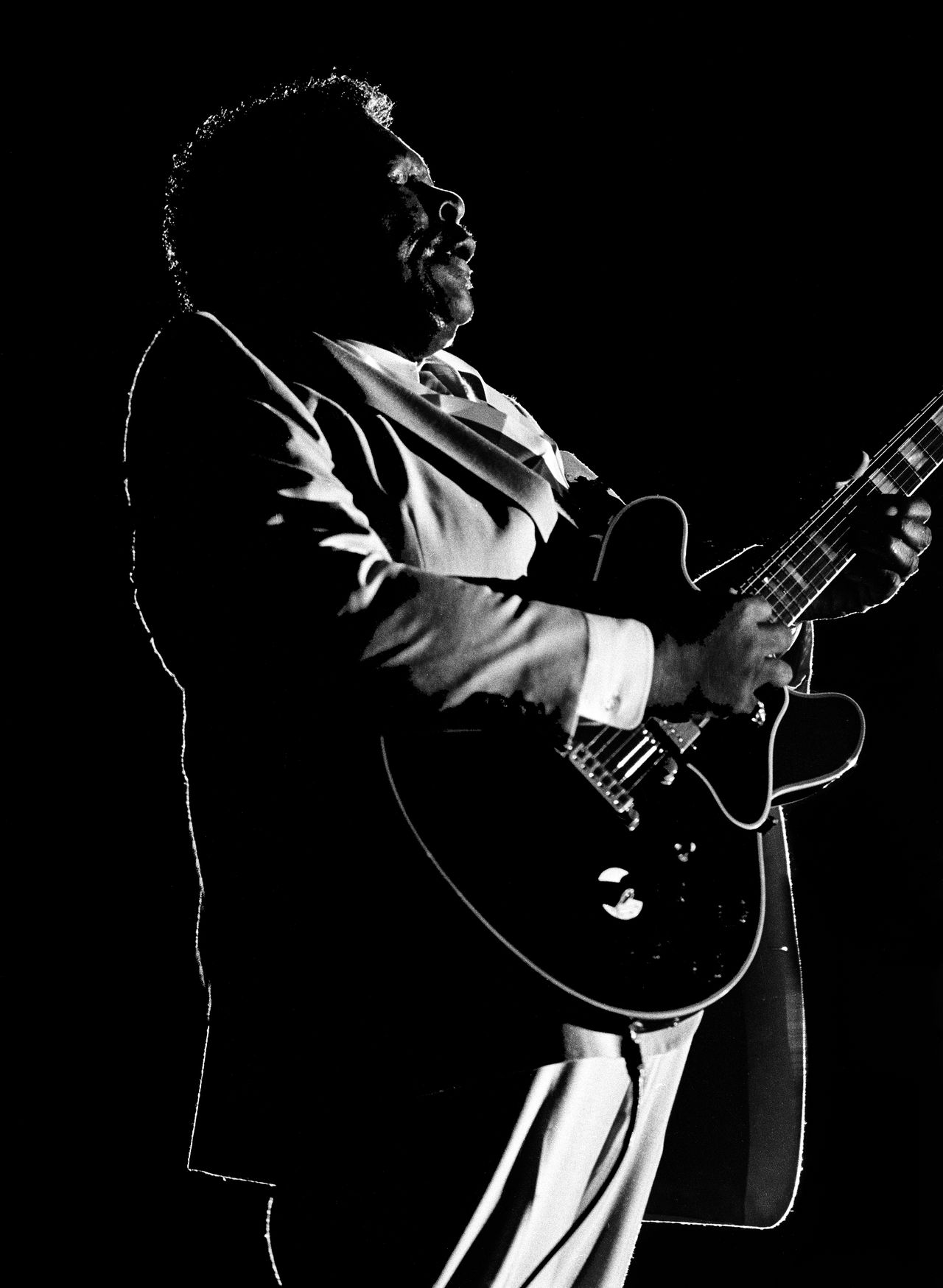
Birmingham’s Art Meripol took photos of B.B. King during a 1986 concert in Little Rock, Arkansas, at the Statehouse Convention Center. (Art Meripol)Art Meripol
B.B. King (1987, Little Rock, Arkansas)
“Third time’s the charm. I’d photographed B.B. King twice before and this time still wasn’t happy with what I’d captured. As I ran out of shooting time I was leaving by a side door near the stage. When I looked back one last time, I saw him silhouetted by a spotlight and got one good frame before the moment was gone. I was grateful that I later had more chances to photograph him, and once I was able to join him for breakfast where we talked about the catfish industry, diabetes and life on the road.”
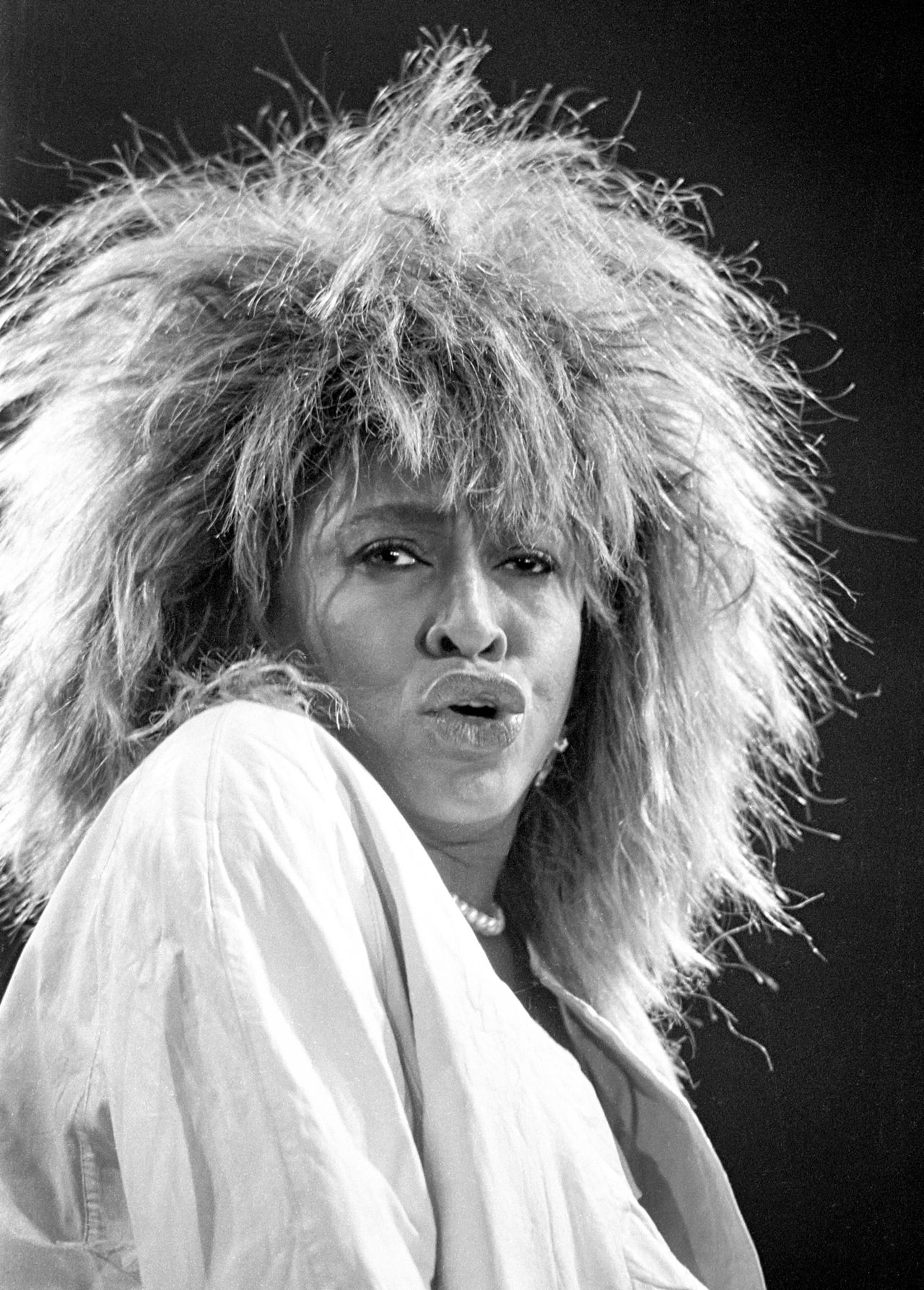
Birmingham’s Art Meripol took photos of Tina Turner during a 1985 concert in Little Rock, Arkansas. (Art Meripol)
Tina Turner (1985, Little Rock, Arkansas)
“This shot is from her 1985 ‘Private Dancer’ tour. Most shows I simply hunkered down in the pit and photographed action on the stage as it happened. This was the only show where I went with one specific image in my head I wanted to capture. I was shooting with a very heavy, long telephoto lens that was made for low light. It was a beast but had to be hand-held rather than on a tripod. No room for that at a show. I was given the first 10 minutes of the show to shoot. I knew concentrating on just the one shot would mean I would miss a lot of other shots. It was worth it … at least, now I think so because I got the shot I wanted. It shows her face up close, looking back down the lens at me, which meant she would be in the viewer’s face in the photo.”
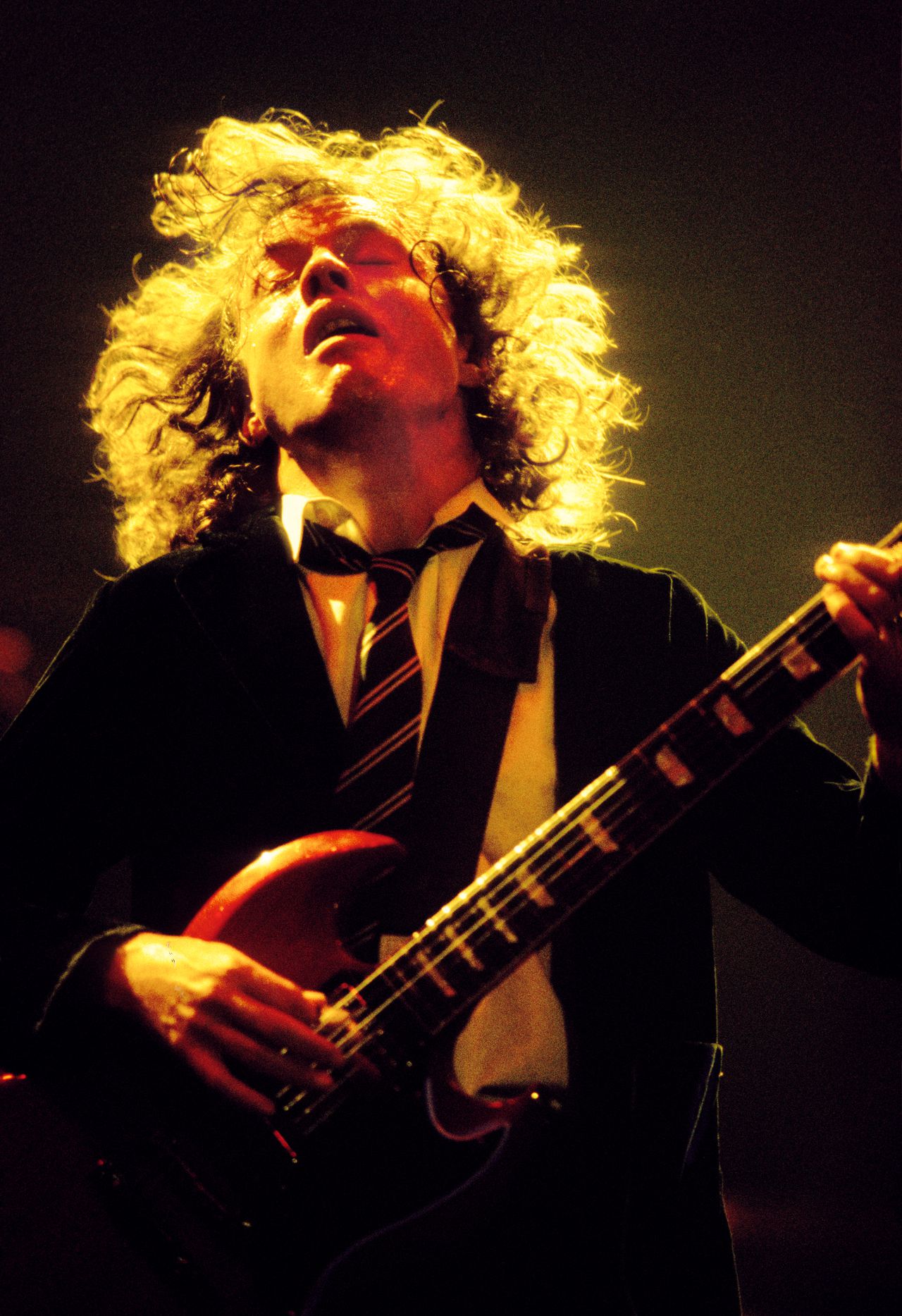
Birmingham’s Art Meripol took photos of Angus Young of AC/DC during a 1988 concert in Little Rock, Arkansas. (Art Meripol)
AC/DC (1988, Little Rock, Arkansas)
“I’d already photographed the band once and was especially excited to do so again. Angus Young brings a lot of energy. As always, I got into the ‘pit’ in front of the stage early so all the T-shirt security guys could see I had a credential from the record company and belonged. When you only get to shoot the first three songs, you can’t spend all that time arguing in the noise with a speaker in your face, so it was best to show up early. As the lights in the arena went out, a spotlighted rocket rose from the center of the stage. I was focused on that and just as a door popped open on the rocket and Angus Young stepped out of the rocket’s door, someone grabbed me by the back of my shirt. It was their road manager. A very big guy, he started dragging me out. I was trying to scream out that I had a credential and was trying to point to where it was stuck on my shirt. It didn’t matter. Sliding past the monitors and away from the stage he told me in his own special way that he didn’t give a flying flip. So I only got one frame from that show. But it was a good one. I wasn’t happy at the time, but from this vantage point I really do enjoy the rock ‘n’ roll story it provided.”
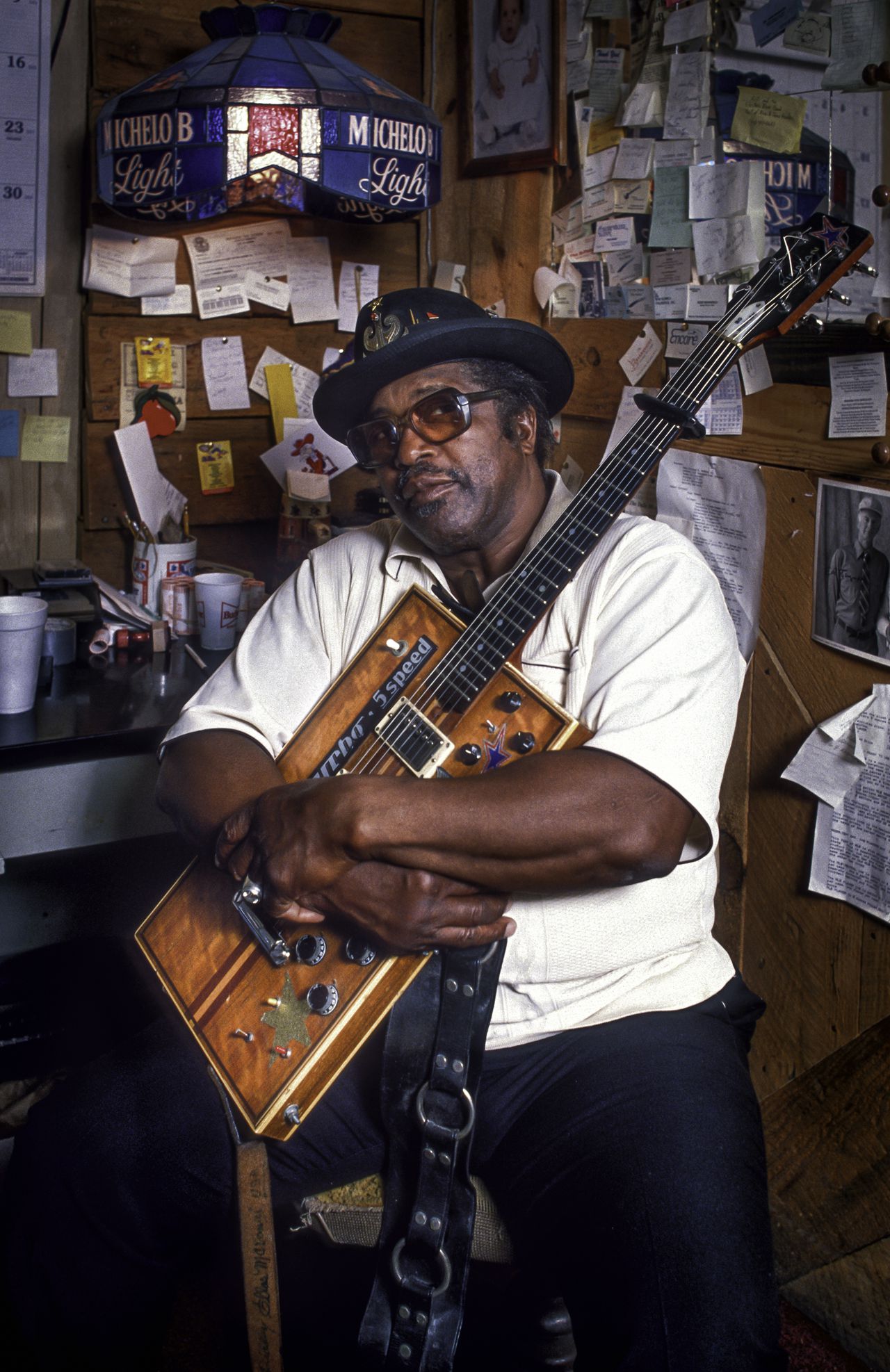
Birmingham’s Art Meripol took photos of Bo Diddley circa 1990 in Oxford, Mississippi. (Art Meripol)
Bo Diddley (Circa 1990. Oxford, Mississippi)
“I was in Oxford and caught him playing in a small basement club called Lafayette’s. It’s likely gone now, but what a fun night. He just picked up local musicians for his dates wherever he played and then had to coach them through the gig. The next morning I was having breakfast at Smitty’s with the writer on the assignment when he and his manager came in and joined us. Bo ordered three large oval platters of classic Southern breakfast. When we finished they drove away, headed to their next gig in an old battered, smoking Volvo.”
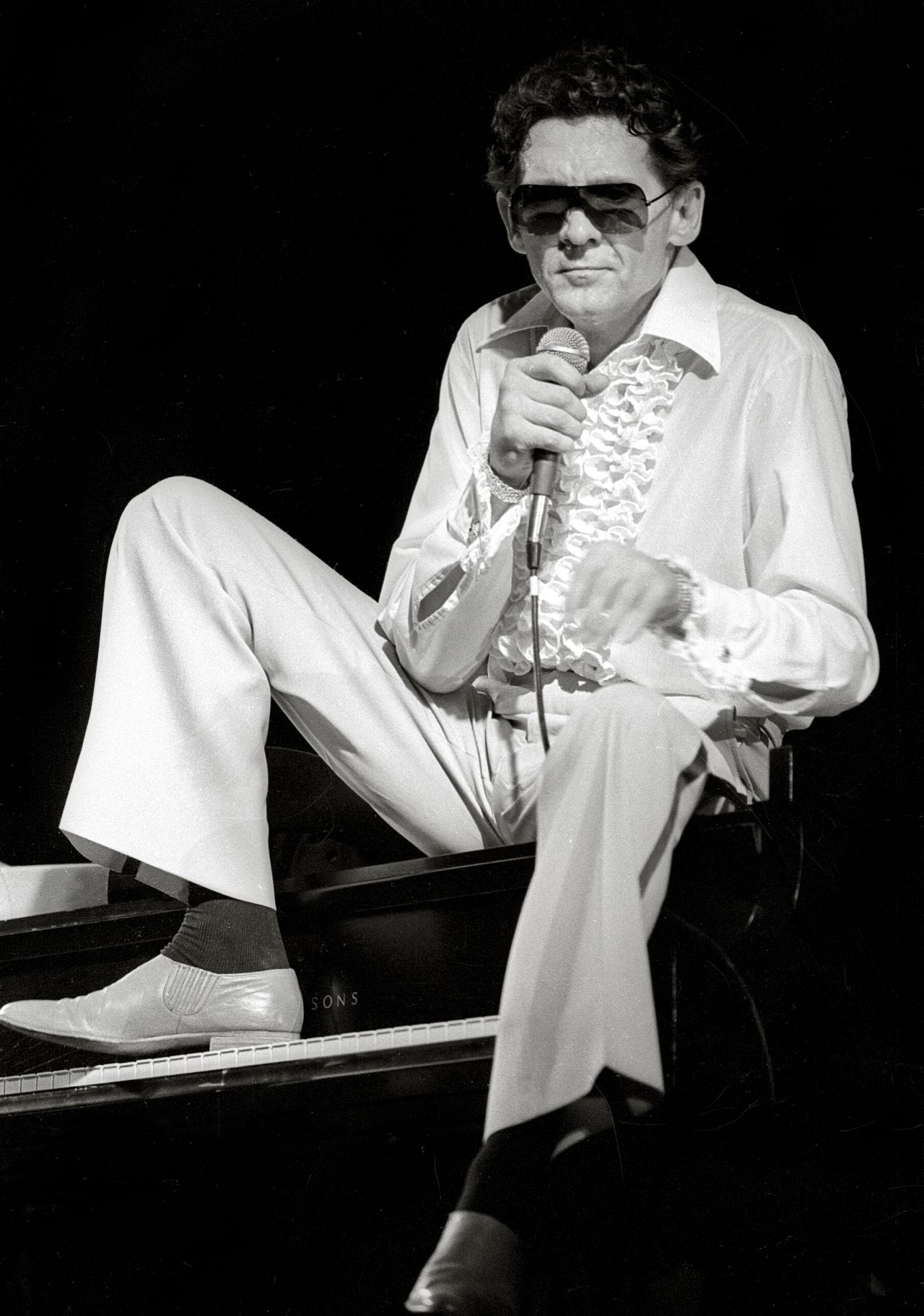
Birmingham’s Art Meripol took photos of Jerry Lee Lewis during a 1981 concert in Port Arthur, Texas. (Art Meripol)
Jerry Lee Lewis (1981, Port Arthur, Texas)
“If I remember right, Jerry Lee had just left the hospital after nearly dying of some stomach issue and there was some doubt whether he’d make the show. He did, of course, though he looked cadaverous. He started slow but built energy and enthusiasm as the show went on, sneering at the audience almost in anger. Truly ‘The Killer’.”

Birmingham’s Art Meripol took photos of Merle Haggard during a 1985 concert in Little Rock, Arkansas, at BJ’s Star Studded Honky Tonk. (Art Meripol)
Merle Haggard (Circa 1987, Little Rock, Arkansas)
“Shooting Merle in a country honky tonk was perfect. I didn’t know his music much beyond ‘Okie from Muskogee,’ but that night he made me a fan. When he died, the Rock and Roll Hall of Fame used this shot in their ‘in memoriam’ part of the annual induction ceremonies.”
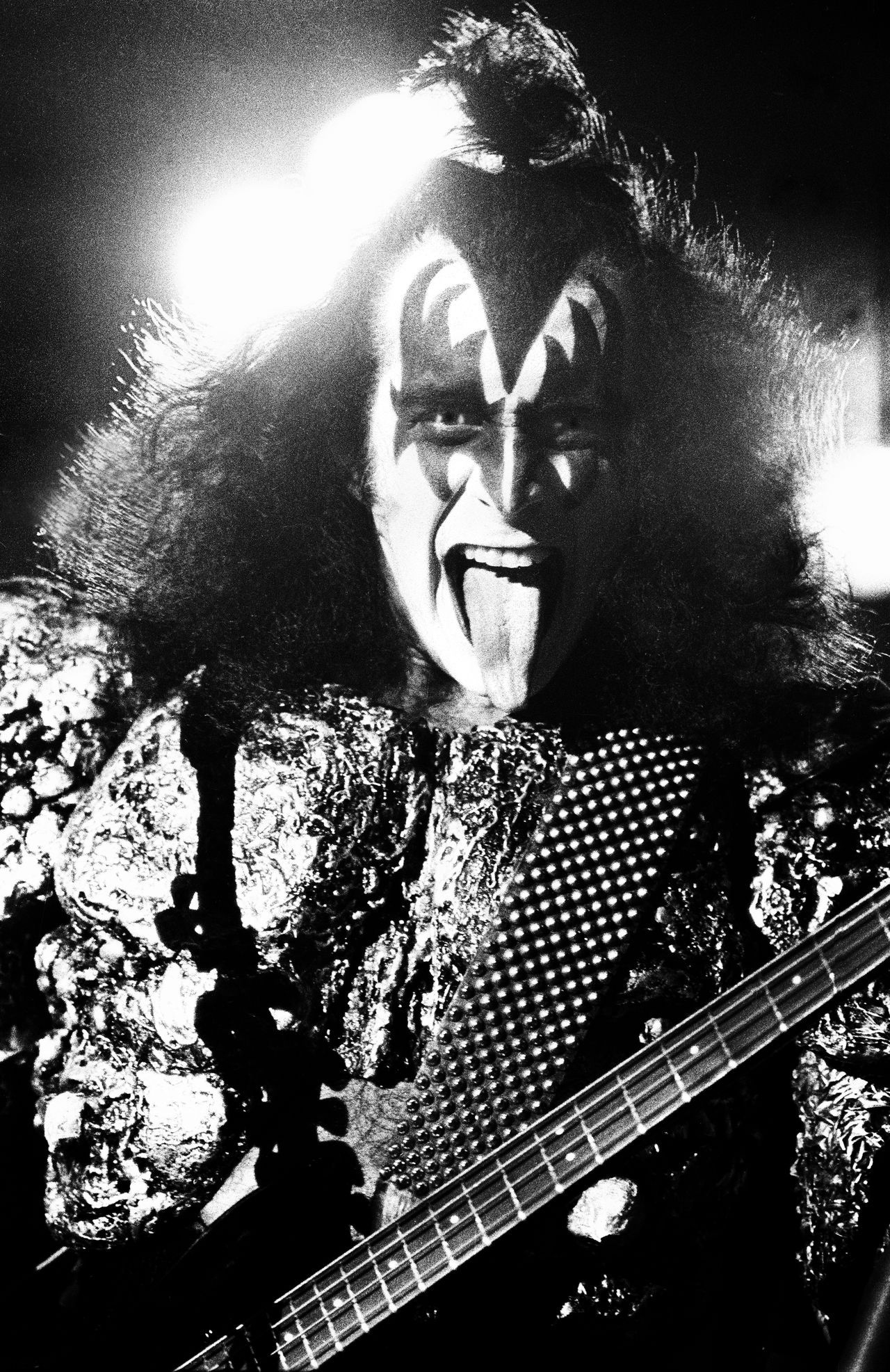
Birmingham’s Art Meripol took photos of Gene Simmons of KISS during a 1979 concert in Lake Charles, Louisiana. (Art Meripol)
KISS (1979, Lake Charles, Louisiana)
“This shot of Gene Simmons was from a show in Lake Charles, Louisiana. The arena was an echo-chamber and dark. The audience was packed with highly committed fans. The stage wasn’t very high and I was crouching down low trying not to block fans. Gene came to me and leaned over from the waist and started sticking his generous tongue out at me from just a couple feet away. The lights were behind his head. On that old manual film camera I didn’t have much time to adjust exposure and focus, but he stayed there doing it so long I realized he wanted to make sure I got the shot. I gave him the OK sign with my hand and off he went across the stage. Later in the show he repeated it and I was more prepared, got a better version and, again, gave him the OK sign.”
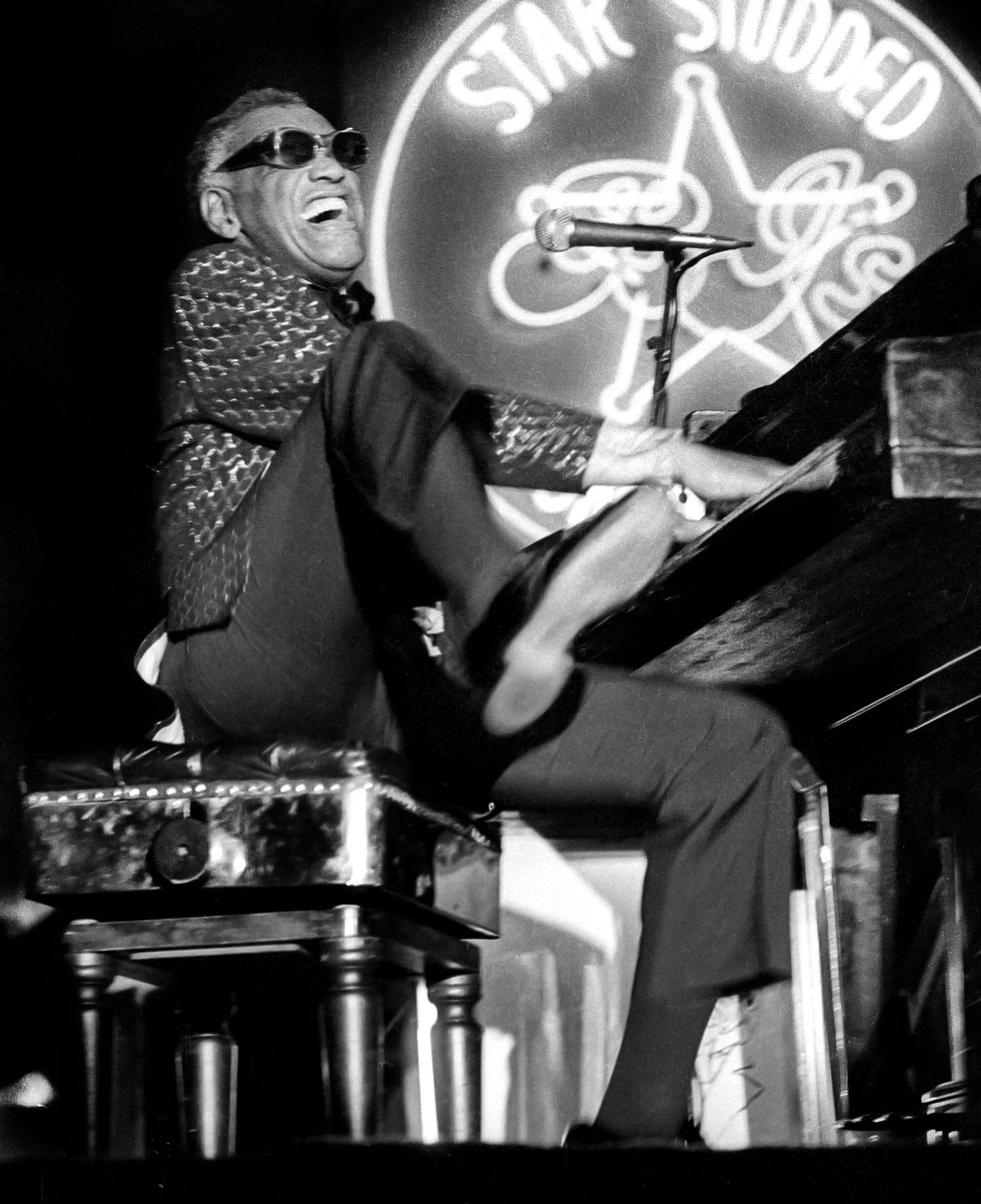
Birmingham’s Art Meripol took photos of Ray Charles during a 1984 concert in Little Rock, Arkansas. (Art Meripol)
Ray Charles (1984, Little Rock, Arkansas)
“Like B.B. King, I’d photographed Ray Charles before but hadn’t captured ‘my’ shot. They all looked too generic. This night I was shooting up at him over the lip of the stage. He looked so feeble being led across the stage to the piano bench. He sat hunched over the keyboard and mumbled a few comments before lifting his hands and pouncing on the keys. It was like a charge of electricity hit him, and his whole body came alive. The power of music over him was magic.”
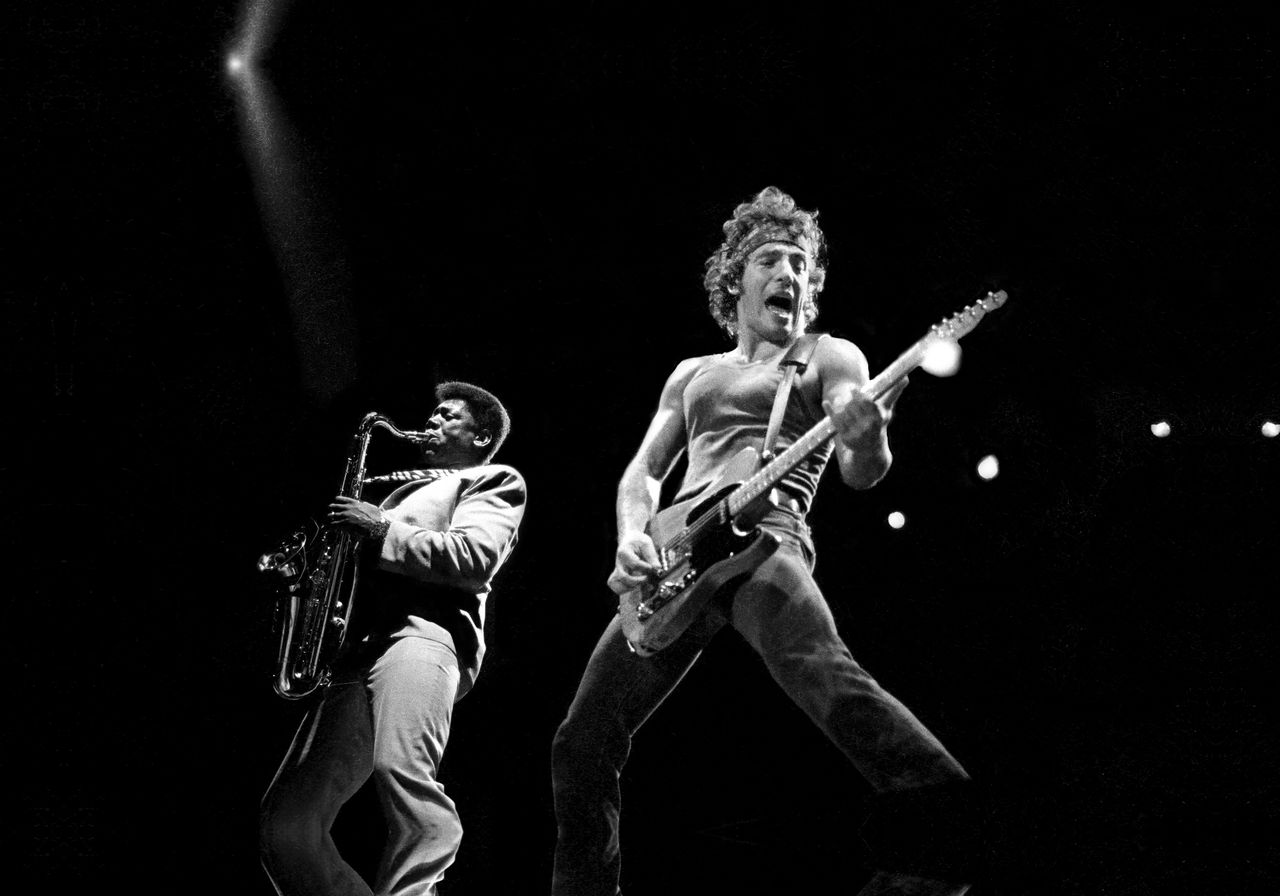
Birmingham’s Art Meripol took photos of Bruce Springsteen, right, during a 1984 concert in Memphis, Tennessee. Clarence Clemons, then a member of the E Street Band, is at left. (Art Meripol)
IF YOU GO:
Concert photos by Art Meripol will be on view Jan. 10-March 5, 2023, at the gallery at Aldridge Gardens, 3530 Lorna Road, Hoover. Hours are 9 a.m.-4:30 p.m., Mondays-Fridays; admission is free. Organizers recommend calling 205-682-8019 before you visit, to make sure the gallery is open. (The space is closed occasionally for private events.) Prints from the exhibit are available to purchase; prices are listed at the gallery.
A reception with the photographer is planned for Feb. 16, 5 p.m.-7 p.m. For more info on Meripol and his work, visit his website, Facebook or Instagram pages. A selection of his concert photos is available via RockPaperPhoto.
